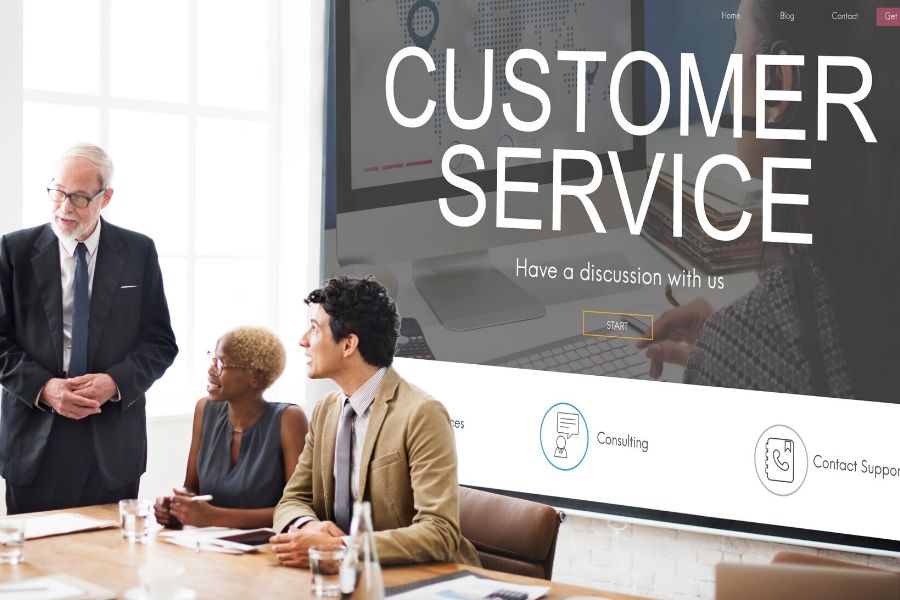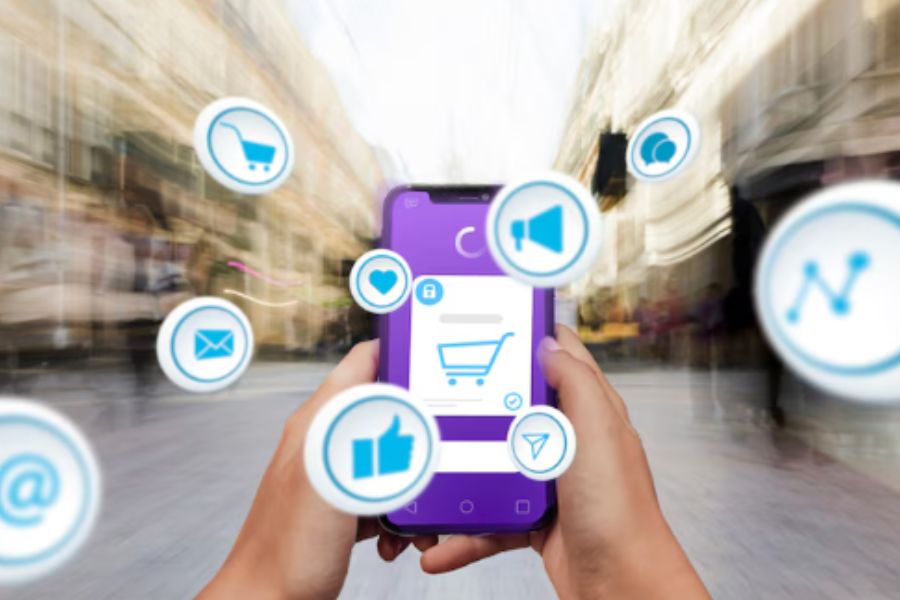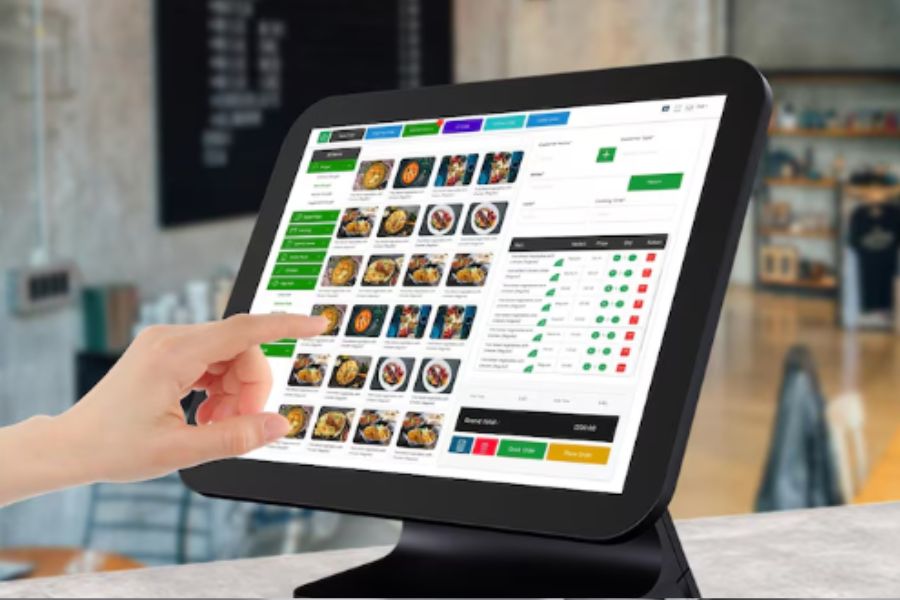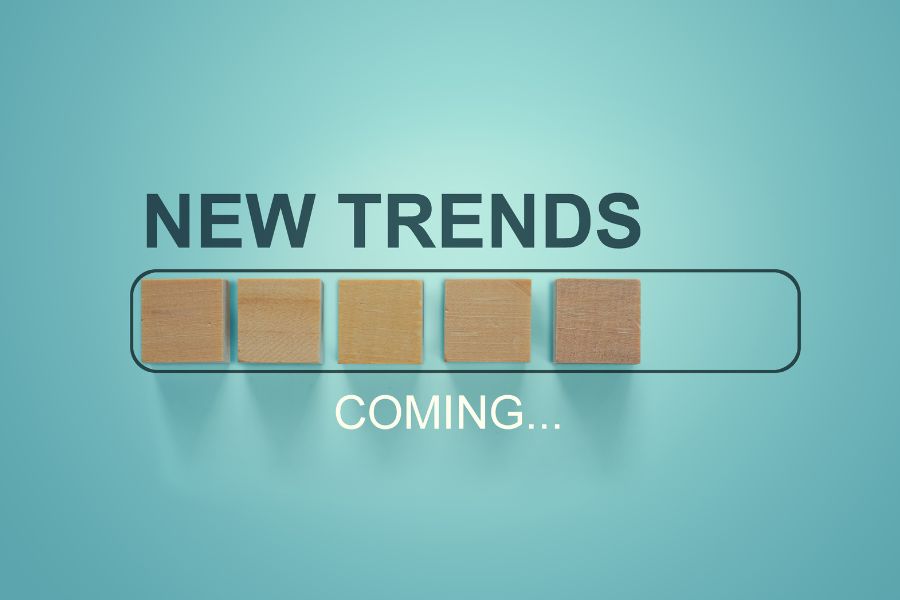Unlocking exceptional customer experiences is pivotal for businesses, and Customer Experience Management (CEM) software is the key. Let’s dive into the top 10 Customer Experience Management software companies in 2024, exploring their unique features, strengths, weaknesses, integration capabilities, real-world applications, and glowing customer testimonials.
Benefits of Customer Experience Management Software
In 2024, Customer Experience Management Software will become an indispensable tool for businesses across various industries, owing to its numerous benefits in enhancing customer satisfaction, improving brand loyalty, and driving business growth.
Here are some of the key benefits of Customer Experience Management Software:
- Enhanced Customer Satisfaction: CEM software enables businesses to gather and analyze customer feedback from multiple touchpoints, allowing them to identify improvement areas and promptly address customer concerns. By better understanding customer needs and preferences, businesses can tailor their products and services to meet customer expectations, ultimately leading to higher satisfaction levels.
- Improved Brand Loyalty: By consistently delivering exceptional customer experiences, businesses can foster stronger relationships with their customers, leading to increased brand loyalty and advocacy. CEM software helps businesses identify loyal customers, personalize interactions, and reward them for their loyalty, ultimately strengthening the bond between the brand and its customers.
- Increased Customer Retention: Studies have shown that acquiring new customers costs significantly more than retaining existing ones. CEM software helps businesses proactively identify at-risk customers and implement targeted retention strategies to prevent churn. By addressing customer issues promptly and providing personalized experiences, businesses can increase customer retention rates and maximize customer lifetime value.
- Better Customer Insights: CEM software provides businesses with valuable insights into customer behavior, preferences, and sentiment through advanced analytics and reporting tools. By analyzing customer data collected from various touchpoints, businesses can gain a deeper understanding of their target audience, identify trends, and anticipate future needs, enabling them to make data-driven decisions and stay ahead of the competition.
- Streamlined Operations: CEM software streamlines various aspects of customer interactions, including feedback collection, ticket management, and response workflows. By centralizing customer data and communication channels, businesses can improve operational efficiency, reduce response times, and ensure consistent service delivery across all touchpoints.
Top 10 Customer Experience Management Software Companies in 2024
Salesforce
Salesforce offers a comprehensive suite of customer relationship management (CRM) tools, including sales, marketing, service, and commerce solutions. Its features include lead management, campaign automation, customer support, and e-commerce integration.
- Strengths and Weaknesses: Salesforce is renowned for its scalability, customization options, and extensive ecosystem of third-party integrations. However, its complex user interface and high pricing may pose challenges for some users.
- Integration Capabilities: Salesforce integrates seamlessly with various CRM, POS, and other business systems, allowing businesses to centralize customer data and streamline workflows across departments.
- Use Cases and Customer Testimonials: Many businesses across industries, including retail, finance, and healthcare, rely on Salesforce to drive sales, improve customer service, and enhance overall customer experiences.
Zendesk
Zendesk offers a suite of customer service and engagement tools, including helpdesk software, live chat, and knowledge base management. Its features include ticketing systems, customer feedback collection, and social media integration.
- Strengths and Weaknesses: Zendesk is praised for its user-friendly interface, flexibility, and scalability. However, its reporting capabilities may be limited for some users, and additional features may require add-on purchases.
- Integration Capabilities: Zendesk integrates with CRM, POS, and other systems, enabling businesses to centralize customer interactions and provide seamless support across channels.
- Use Cases and Customer Testimonials: Many companies across industries use Zendesk to streamline customer support processes, resulting in improved response times, higher satisfaction rates, and enhanced brand reputation.
HubSpot
HubSpot offers a suite of marketing, sales, and customer service tools, including email marketing, lead generation, and helpdesk software. Its features include lead nurturing, marketing automation, and customer relationship management.
- Strengths and Weaknesses: HubSpot is praised for its user-friendly interface, extensive features, and affordable pricing. However, its reporting and analytics capabilities may be limited compared to other solutions.
- Integration Capabilities: HubSpot integrates seamlessly with CRM and other systems, allowing businesses to centralize customer data and automate workflows across marketing, sales, and customer service departments.
- Use Cases and Customer Testimonials: Businesses of all sizes and industries use HubSpot to attract, engage, and delight customers, resulting in increased leads, conversions, and customer loyalty.
Freshdesk
Freshdesk offers a range of customer support and engagement tools, including ticketing systems, live chat, and self-service portals. Its features include omnichannel support, automation, and knowledge base management.
- Strengths and Weaknesses: Freshdesk is praised for its ease of use, affordability, and robust features. However, its reporting capabilities may be limited compared to enterprise-level solutions.
- Integration Capabilities: Freshdesk integrates with CRM, POS, and other systems, enabling businesses to streamline customer support processes and improve efficiency.
- Use Cases and Customer Testimonials: Many companies across industries use Freshdesk to provide exceptional customer support, resulting in higher satisfaction rates, reduced resolution times, and improved brand reputation.
Zoho CRM
Zoho CRM offers a comprehensive suite of customer relationship management tools, including lead management, sales automation, and workflow automation. Its features include contact management, pipeline management, and analytics.
- Strengths and Weaknesses: Zoho CRM is known for its affordability, flexibility, and extensive customization options. However, its user interface may be outdated compared to other solutions.
- Integration Capabilities: Zoho CRM integrates with various systems, including POS and marketing automation platforms, allowing businesses to centralize customer data and improve collaboration across departments.
- Use Cases and Customer Testimonials: Businesses across industries use Zoho CRM to streamline sales processes, improve customer relationships, and drive revenue growth.
Qualtrics
Qualtrics offers a comprehensive platform for customer experience management, including survey tools, feedback management, and analytics. Its features include customer feedback collection, sentiment analysis, and predictive analytics.
- Strengths and Weaknesses: Qualtrics is praised for its robust features, flexibility, and advanced analytics capabilities. However, its complexity may require training for some users.
- Integration Capabilities: Qualtrics integrates with CRM, POS, and other systems, enabling businesses to collect and analyze customer feedback across touchpoints.
- Use Cases and Customer Testimonials: Many companies use Qualtrics to gather insights into customer preferences, identify areas for improvement, and drive business growth.
Medallia
Medallia offers a comprehensive platform for customer experience management, including feedback management, sentiment analysis, and predictive analytics. Its features include real-time feedback collection, text analytics, and journey mapping.
- Strengths and Weaknesses: Medallia is praised for its advanced analytics capabilities, scalability, and industry-specific solutions. However, its cost may be prohibitive for some businesses.
- Integration Capabilities: Medallia integrates with CRM, POS, and other systems, enabling businesses to collect and analyze customer feedback in real-time.
- Use Cases and Customer Testimonials: Many companies use Medallia to measure and improve customer satisfaction, drive loyalty, and increase revenue.
SAP Customer Experience
SAP Customer Experience offers a suite of marketing, sales, and service solutions, including customer data management, marketing automation, and commerce. Its features include personalized marketing, omnichannel commerce, and service ticketing.
- Strengths and Weaknesses: SAP Customer Experience is known for its robust features, scalability, and industry-specific solutions. However, its complexity may require implementation assistance.
- Integration Capabilities: SAP Customer Experience integrates with CRM, POS, and other systems, enabling businesses to create a unified view of customer interactions.
- Use Cases and Customer Testimonials: Many companies use SAP Customer Experience to streamline marketing, sales, and service processes, resulting in improved customer satisfaction and business performance.
Oracle CX Cloud
Oracle CX Cloud offers a suite of solutions for marketing, sales, and service, including customer data management, marketing automation, and commerce. Its features include lead management, campaign automation, and service ticketing.
- Strengths and Weaknesses: Oracle CX Cloud is praised for its robust features, scalability, and industry-specific solutions. However, its cost and complexity may be barriers for some businesses.
- Integration Capabilities: Oracle CX Cloud integrates with CRM, POS, and other systems, enabling businesses to create a unified view of customer interactions.
- Use Cases and Customer Testimonials: Many companies use Oracle CX Cloud to streamline marketing, sales, and service processes, resulting in improved customer satisfaction and business performance.
Adobe Experience Manager
Adobe Experience Manager offers content management solutions with capabilities for digital asset management, personalization, and multichannel delivery. It helps businesses create and deliver engaging digital experiences.
- Strengths and Weaknesses: Comprehensive content management capabilities, robust personalization tools and integration with Adobe Marketing Cloud. For weaknesses high cost of ownership, complexity in implementation, and customization
- Integration Capabilities: Adobe Experience Manager integrates with Adobe Marketing Cloud, CRM systems, POS systems, and other business applications, enabling seamless content delivery and personalized customer experiences.
- Use Cases and Customer Testimonials: Managing and optimizing digital content, delivering personalized experiences, and improving customer engagement. Adobe Experience Manager has empowered our marketing team to create and deliver dynamic content that resonates with our audience, driving increased engagement and conversions.” – Digital Marketing Manager, Technology.
How ConnectPOS Supports Your Business with CEM
ConnectPOS is more than just a point-of-sale system; it’s a comprehensive solution that supports your business in delivering exceptional customer experiences through effective customer experience management (CEM). Here’s how ConnectPOS supports your business with CEM:
1. Real-time Inventory Management: ConnectPOS provides real-time inventory management capabilities, allowing businesses to keep track of stock levels accurately. By ensuring products are always available when customers need them, businesses can enhance customer satisfaction and avoid stockouts, ultimately improving the overall shopping experience.
2. Omnichannel Integration: ConnectPOS seamlessly integrates with e-commerce platforms, CRMs, and other systems, enabling businesses to provide a seamless omnichannel shopping experience to their customers. Whether customers prefer to shop online, in-store, or via mobile devices, ConnectPOS ensures a consistent experience across all channels, fostering customer loyalty and engagement.
3. Customizable POS Interface: ConnectPOS offers a customizable POS interface that can be tailored to meet the unique needs and branding requirements of each business. With customizable layouts, branding elements, and user permissions, businesses can create a personalized shopping environment that resonates with their customers, enhancing brand perception and loyalty.
4. Multi-store Management Capabilities: For businesses with multiple locations, ConnectPOS provides multi-store management capabilities, allowing them to centralize operations and streamline processes across all stores. With centralized inventory management, reporting, and customer data, businesses can optimize resource allocation, improve efficiency, and deliver consistent experiences across all locations.
FAQs: Top 10 Customer Experience Management Software Companies in 2024
- What is Customer Experience Management (CEM) software?
CEM software is a suite of tools and solutions designed to help businesses understand, measure, and enhance the overall customer experience across various touchpoints. It encompasses strategies, processes, and technologies aimed at delivering exceptional experiences to customers throughout their journey with a brand. CEM software plays a critical role in shaping positive interactions and fostering customer loyalty, from collecting feedback to analyzing data and implementing actionable insights.
2. What factors should be considered when choosing CEM software?
When selecting CEM software, businesses should consider several factors to ensure they invest in the right solution for their needs. These factors include:
- Features and capabilities: Ensure the software offers the necessary tools for collecting customer feedback, analyzing data, and implementing actionable insights.
- Scalability: Choose a solution that can grow with your business and accommodate future needs without significant disruptions.
- Integration capabilities: Look for software that seamlessly integrates with existing CRM, POS, and other systems to centralize customer data and streamline department processes.
- Ease of use: Opt for user-friendly software that requires minimal training for employees to use effectively, ensuring widespread adoption and maximum ROI.
- Pricing and ROI: Evaluate the cost of the software relative to its features and potential return on investment (ROI) in terms of improved customer satisfaction, retention, and business outcomes.
3. Why is CRM and other software integration important for optimizing customer experience?
Integration with CRM and other software systems is crucial for optimizing customer experience because it enables businesses to:
- Centralize customer data: Integration allows businesses to consolidate customer information from various touchpoints into a single, unified database, providing a comprehensive view of customer interactions and preferences.
- Personalize interactions: By leveraging integrated data, businesses can personalize communications and offerings based on customer behavior, preferences, and purchase history, resulting in more relevant and engaging experiences.
- Streamline processes: Integration streamlines workflows and eliminates data silos, enabling seamless communication and collaboration across departments. This leads to faster response times, improved service delivery, and ultimately, enhanced customer satisfaction.
4. What are some common challenges when implementing CEM software? Implementing CEM software can present various challenges for businesses, including:
- Data silos: Difficulty in consolidating customer data from disparate systems, resulting in incomplete or inaccurate insights.
- Resistance to change: Employee resistance to adopting new processes or technologies due to lack of training or perceived disruption to existing workflows.
- Complexity: Configuring and customizing the software to meet specific business requirements is complex, leading to delays in implementation and deployment.
- Measuring ROI: There are challenges in quantifying the impact of CEM initiatives on key performance indicators (KPIs) such as customer satisfaction, retention, and revenue, making it difficult to justify investments and track success.
Conclusion
The top 10 customer experience management software companies in 2024 represent the pinnacle of innovation and excellence in the realm of CEM. With their cutting-edge solutions and unwavering commitment to customer-centricity, these industry leaders continue to redefine the standards of exceptional customer experiences, driving business growth and success in an increasingly competitive landscape.
If you want to find out how ConnectPOS can be integrated with CEM software and boost your business, don’t hesitate to contact us!



